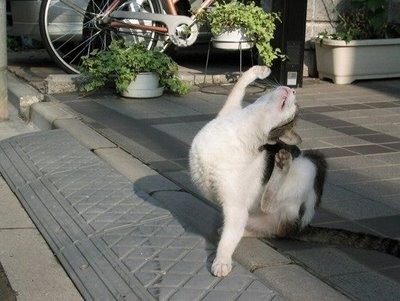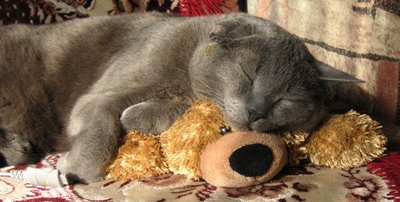See the sights (and relatives, too) without the usual health hassles.
Lack of sleep, lurking germs, bathroom issues, and a host of other travel travails can complicate anyone's holiday trip. Indeed, getting sick on vacation is an all-too-common problem: As many as 63 percent of travelers say it's happened to them, surveys show. Is there a better way to go? Absolutely. All it takes is smart planning. Here's our expert-endorsed to-do list.
Outsmart airplane germs
Problem: You're getting a scratchy throat from the recirculated air at 30,000 feet, and the hygiene-challenged guy behind you is hacking up a lung.
Solution: Relax. Airplane air isn't quite as dirty as you think, says Roy DeHart, MD, MPH, former commander of the Air Force School of Aerospace Medicine in Texas. It's cleaner than the air in most restaurants or crowded offices. But if someone within two rows of you is coughing or sneezing, try to move to an empty seat. Also:
• Drink plenty of bottled water--desert-like cabin air dries your mouth and nose, making you more susceptible to germs.
• Avoid the coffee and tea. A recent inspection found fecal bacteria in 17 percent of planes' water, which is used to make those beverages.
Survive a snot parade
Problem: Your nephew's the cutest snot factory you've ever met. Can you play with him without catching the plague?
Solution: Gently steer clear of his germy hands, toys, and anything else he touches. And if you want to get cuddly:
• Wash your hands frequently (especially before you eat and after you hold him) and be sure to keep a hand sanitizer handy.
• Avoid touching your face unless you've just cleaned your hands.
• Enjoy the moment. Little kids catch 10 to 12 infections per year, but adults' immune systems are much stronger.
Keep it regular
Problem: You have trouble going when you're away from home.
Solution: Get moving. Sitting in an airport or in front of the TV with family is sure to slow things down, so take a walk each day. Also:
• Start eating high-fiber foods like beans and grains or taking fiber supplements before your trip, and drink 6 to 8 glasses of water daily.
• Seize the opportunity when the urge strikes you. Putting it off can bring on constipation.
• Sit on the toilet for a few minutes the same time each day, like after breakfast, even if nothing happens. If you're still stuck, take a stool softener with docusate (like Colace or Doculax) For more help, see "Beat the Belly Blues" on page 120.
Sleep Like a baby
Problem: The pillow's too flat, the comforter's too hot, and you miss your ceiling fan.
Solution: Bring a little bit of home along with you--like your favorite pillow. Also:
• Stick to your usual bedtime, and don't sleep in.
• If you're drinking more caffeine than usual (who doesn't on vacation?), try to lay off after lunch. For alcohol, make it 3 hours before bed.
• Lower the thermostat if you can--many people sleep best when the room's around 65 degrees. Can't escape a stuffy room? Pack a tiny travel fan, like Magellan's ($8.85; 800-962-4943 or www.magellans.com).
• Stay busy during the day, and get lots of sunlight (with sunscreen, of course). Regular exposure to sun helps set your body clock.
• If you're desperate, ask your doctor about using a nonprescription medicine like Benadryl or Tylenol PM at bedtime. (But keep in mind that most contain an antihistamine, which can leave you groggy.)
Avoid allergies
Problem: You're allergic to cats, but your Aunt Betty has a house full of felines (and dander, fur, and hairballs).
Solution: Make a note to remember your allergy medicines. If you forget them, buy a nondrowsy antihistamine like Claritin, Alavert, or a generic so you're not zonked your whole stay. (Get the 24-hour, extended-release version.) Nonprescription cromolyn nasal sprays like NasalCrom can make the reactions less intense. A decongestant like Sudafed may do the trick, too. More tips:
• Move throw pillows, blankets, and stuffed animals--whatever might be full of dander--to a closet. If pets have been on the bed, strip the bedding and replace it with clean linens. Or, better yet, bring some linens from home.
• Explain to your aunt how sick cats make you and ask her (nicely!) if she'll board the kitties during your stay--make sure you offer to pay for it.
Wipe out hotel willies
Problem: You're staying at a nice hotel, but you can't stop thinking about news of a bedbug comeback.
Solution: Be vigilant when you arrive. No matter the hotel (room rates have nothing to do with the risk of infestation), make sure you:
• Check for droppings, which look like small red or brown stains or spots. (You won't see the bugs because they only come out at night, says Susan Jones, PhD, associate professor of entomology at Ohio State University.) Pull back the bedspread and check the sheets, then the mattress and box springs. And give the baseboards and upholstered furniture a once-over. Bedbugs can travel 100 feet when hunting a meal.
• If you see droppings, tell the management and ask for a room on another floor. Ditto if you wake up with itchy mosquito-bite-like welts. (You probably won't feel the bite when it happens.) Bedbugs may make you scratch, but they don't transmit infections.
• Even if the room seems clear, keep your suitcase zipped and on a luggage stand, and don't leave clothes lying around. The bugs love to hitchhike on clothes and in luggage.
By Eric Steinmehl
Lack of sleep, lurking germs, bathroom issues, and a host of other travel travails can complicate anyone's holiday trip. Indeed, getting sick on vacation is an all-too-common problem: As many as 63 percent of travelers say it's happened to them, surveys show. Is there a better way to go? Absolutely. All it takes is smart planning. Here's our expert-endorsed to-do list.
Outsmart airplane germs
Problem: You're getting a scratchy throat from the recirculated air at 30,000 feet, and the hygiene-challenged guy behind you is hacking up a lung.
Solution: Relax. Airplane air isn't quite as dirty as you think, says Roy DeHart, MD, MPH, former commander of the Air Force School of Aerospace Medicine in Texas. It's cleaner than the air in most restaurants or crowded offices. But if someone within two rows of you is coughing or sneezing, try to move to an empty seat. Also:
• Drink plenty of bottled water--desert-like cabin air dries your mouth and nose, making you more susceptible to germs.
• Avoid the coffee and tea. A recent inspection found fecal bacteria in 17 percent of planes' water, which is used to make those beverages.
Survive a snot parade
Problem: Your nephew's the cutest snot factory you've ever met. Can you play with him without catching the plague?
Solution: Gently steer clear of his germy hands, toys, and anything else he touches. And if you want to get cuddly:
• Wash your hands frequently (especially before you eat and after you hold him) and be sure to keep a hand sanitizer handy.
• Avoid touching your face unless you've just cleaned your hands.
• Enjoy the moment. Little kids catch 10 to 12 infections per year, but adults' immune systems are much stronger.
Keep it regular
Problem: You have trouble going when you're away from home.
Solution: Get moving. Sitting in an airport or in front of the TV with family is sure to slow things down, so take a walk each day. Also:
• Start eating high-fiber foods like beans and grains or taking fiber supplements before your trip, and drink 6 to 8 glasses of water daily.
• Seize the opportunity when the urge strikes you. Putting it off can bring on constipation.
• Sit on the toilet for a few minutes the same time each day, like after breakfast, even if nothing happens. If you're still stuck, take a stool softener with docusate (like Colace or Doculax) For more help, see "Beat the Belly Blues" on page 120.
Sleep Like a baby
Problem: The pillow's too flat, the comforter's too hot, and you miss your ceiling fan.
Solution: Bring a little bit of home along with you--like your favorite pillow. Also:
• Stick to your usual bedtime, and don't sleep in.
• If you're drinking more caffeine than usual (who doesn't on vacation?), try to lay off after lunch. For alcohol, make it 3 hours before bed.
• Lower the thermostat if you can--many people sleep best when the room's around 65 degrees. Can't escape a stuffy room? Pack a tiny travel fan, like Magellan's ($8.85; 800-962-4943 or www.magellans.com).
• Stay busy during the day, and get lots of sunlight (with sunscreen, of course). Regular exposure to sun helps set your body clock.
• If you're desperate, ask your doctor about using a nonprescription medicine like Benadryl or Tylenol PM at bedtime. (But keep in mind that most contain an antihistamine, which can leave you groggy.)
Avoid allergies
Problem: You're allergic to cats, but your Aunt Betty has a house full of felines (and dander, fur, and hairballs).
Solution: Make a note to remember your allergy medicines. If you forget them, buy a nondrowsy antihistamine like Claritin, Alavert, or a generic so you're not zonked your whole stay. (Get the 24-hour, extended-release version.) Nonprescription cromolyn nasal sprays like NasalCrom can make the reactions less intense. A decongestant like Sudafed may do the trick, too. More tips:
• Move throw pillows, blankets, and stuffed animals--whatever might be full of dander--to a closet. If pets have been on the bed, strip the bedding and replace it with clean linens. Or, better yet, bring some linens from home.
• Explain to your aunt how sick cats make you and ask her (nicely!) if she'll board the kitties during your stay--make sure you offer to pay for it.
Wipe out hotel willies
Problem: You're staying at a nice hotel, but you can't stop thinking about news of a bedbug comeback.
Solution: Be vigilant when you arrive. No matter the hotel (room rates have nothing to do with the risk of infestation), make sure you:
• Check for droppings, which look like small red or brown stains or spots. (You won't see the bugs because they only come out at night, says Susan Jones, PhD, associate professor of entomology at Ohio State University.) Pull back the bedspread and check the sheets, then the mattress and box springs. And give the baseboards and upholstered furniture a once-over. Bedbugs can travel 100 feet when hunting a meal.
• If you see droppings, tell the management and ask for a room on another floor. Ditto if you wake up with itchy mosquito-bite-like welts. (You probably won't feel the bite when it happens.) Bedbugs may make you scratch, but they don't transmit infections.
• Even if the room seems clear, keep your suitcase zipped and on a luggage stand, and don't leave clothes lying around. The bugs love to hitchhike on clothes and in luggage.
By Eric Steinmehl








